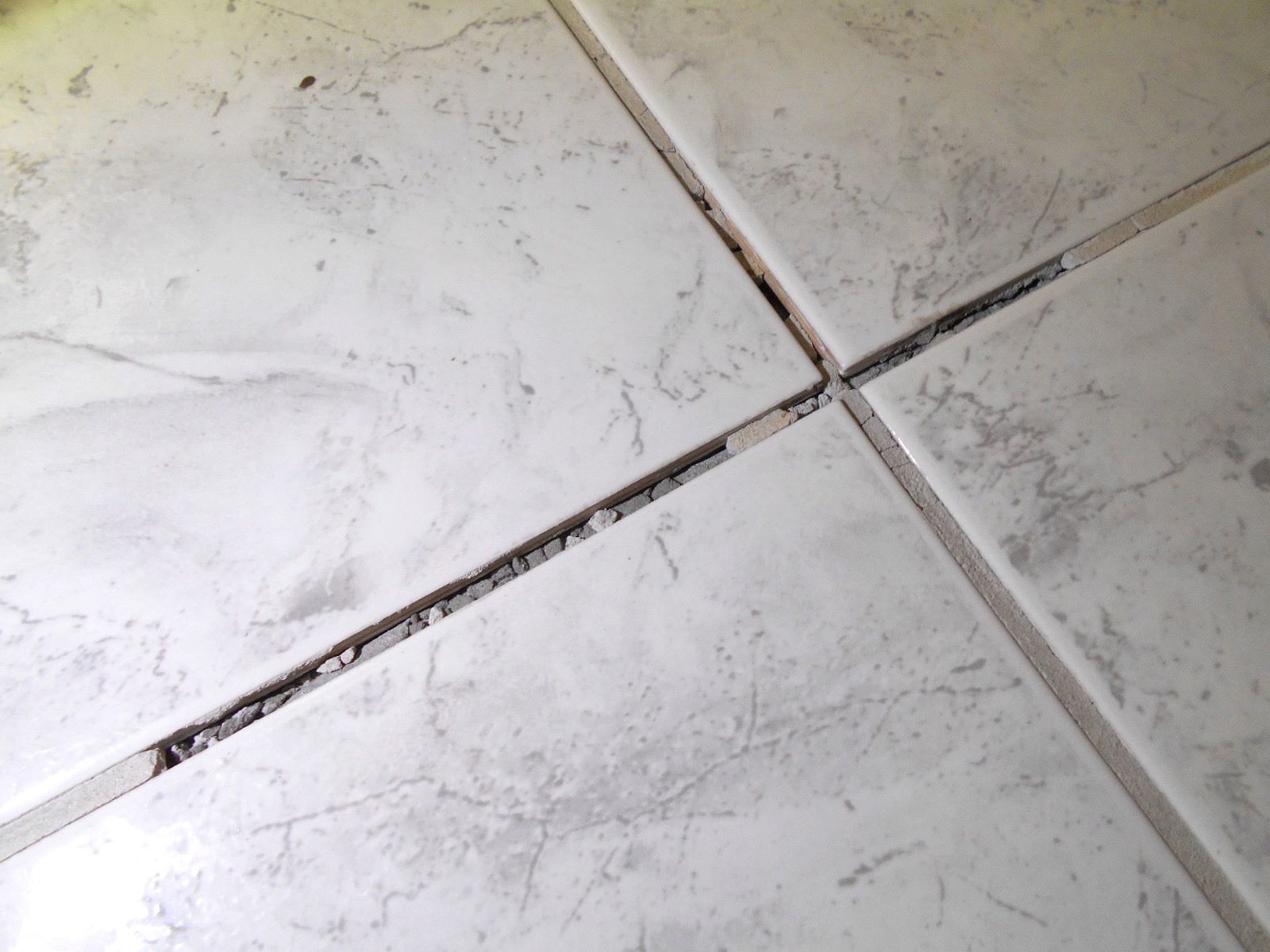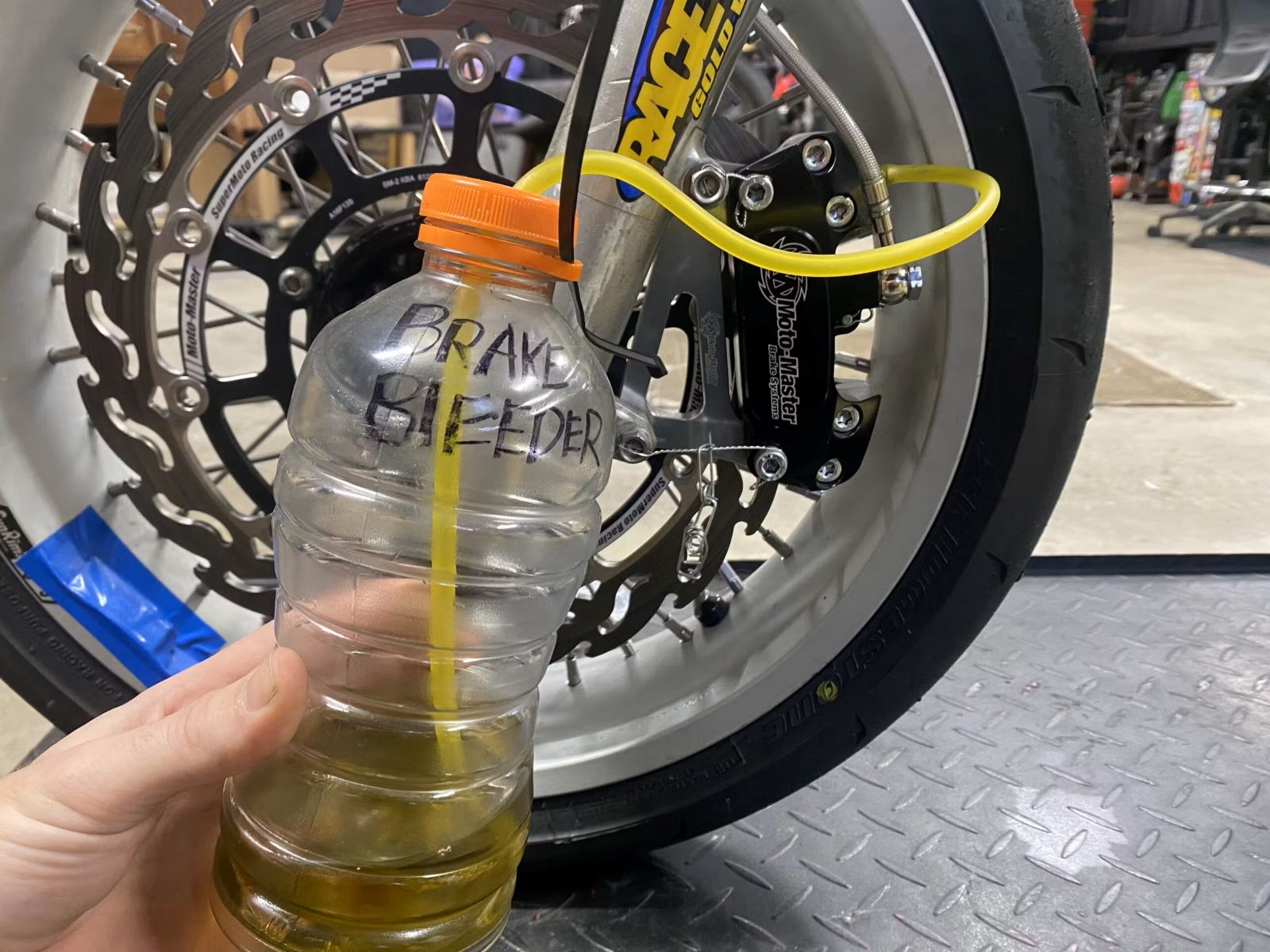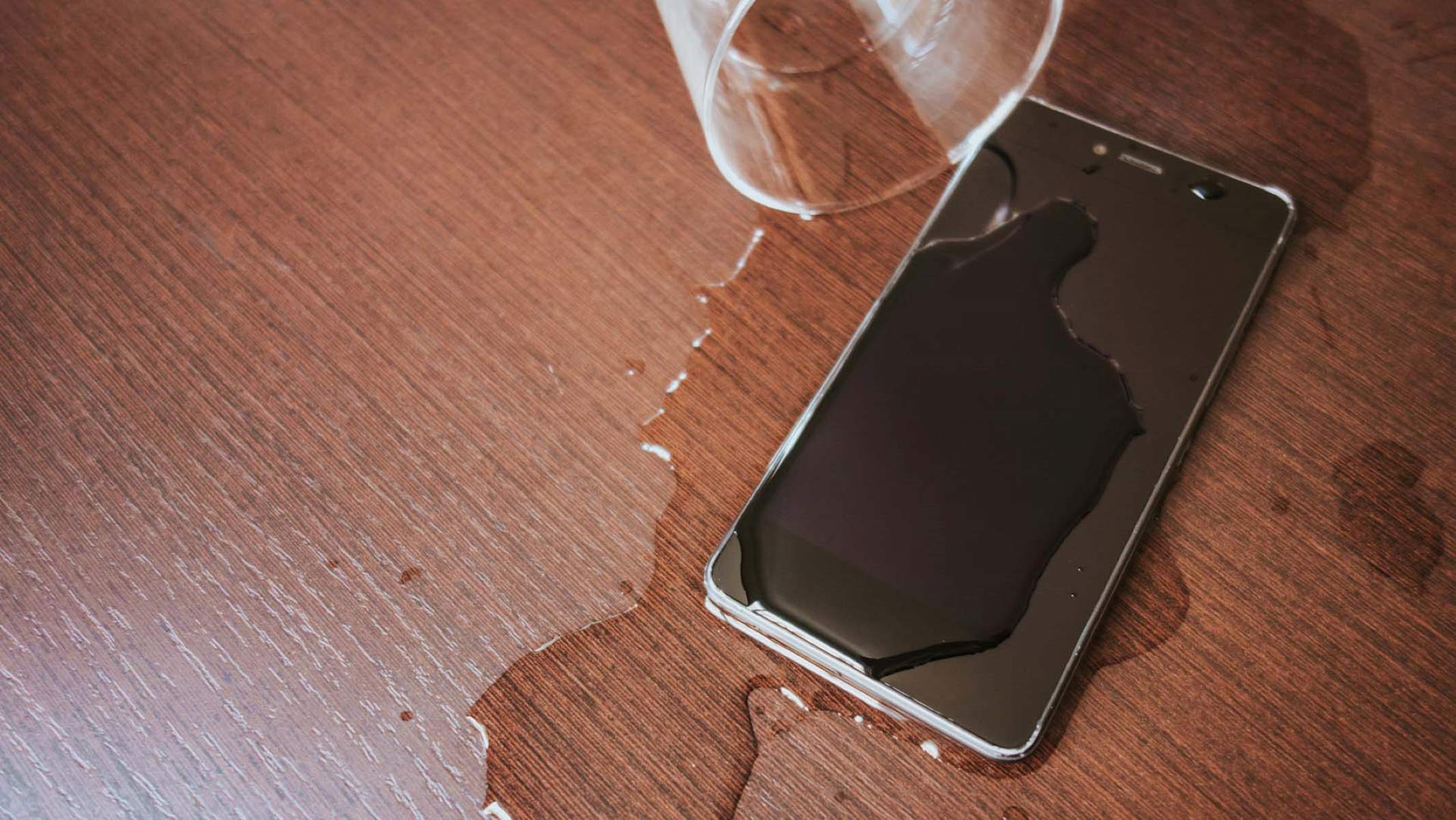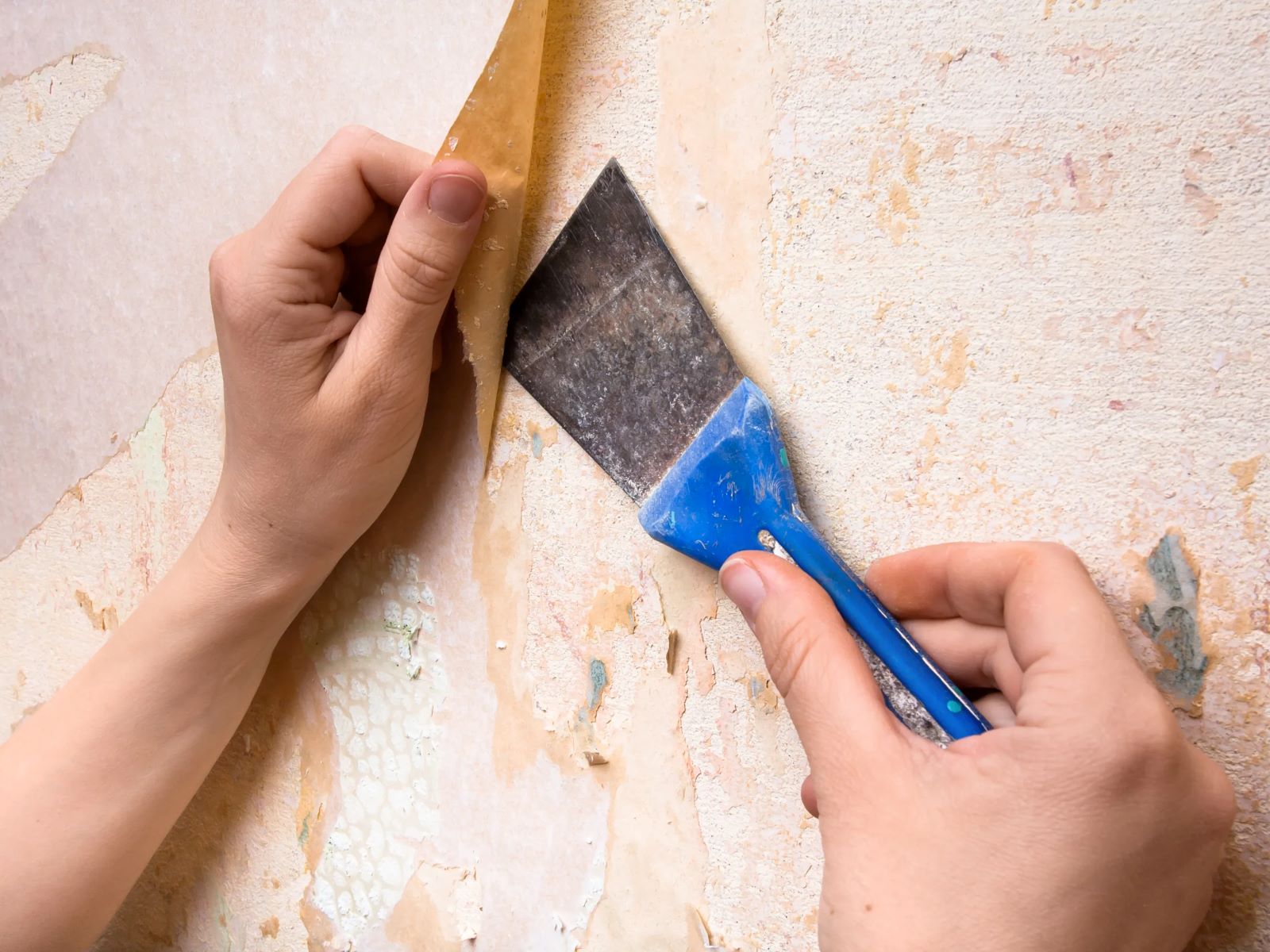Home>Lifestyle>Unscrew A Rusted Bolt With These Surprising Hacks!
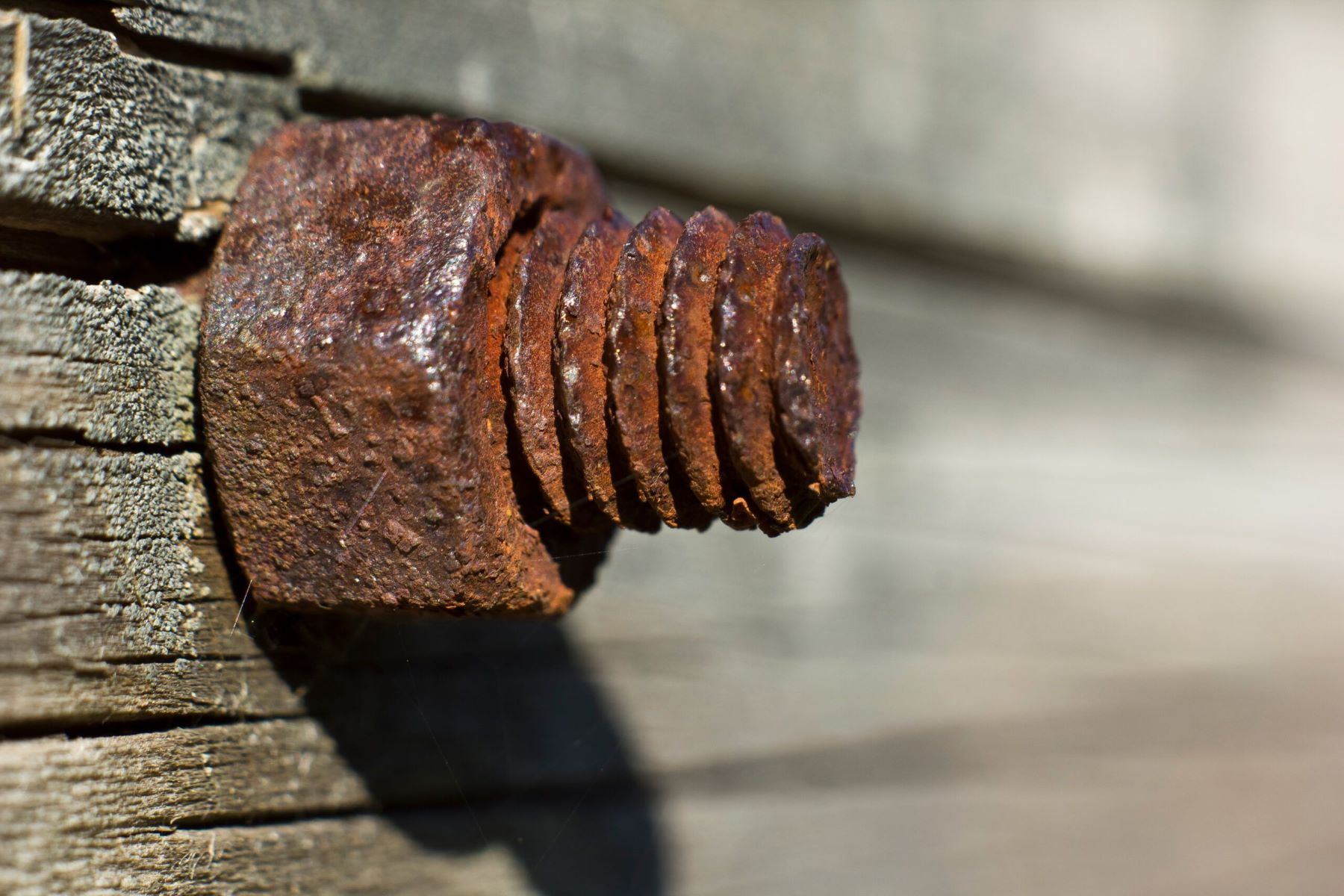

Lifestyle
Unscrew A Rusted Bolt With These Surprising Hacks!
Published: February 14, 2024
Discover effective and surprising hacks to unscrew a rusted bolt and make your life easier. Explore innovative lifestyle tips now!
(Many of the links in this article redirect to a specific reviewed product. Your purchase of these products through affiliate links helps to generate commission for Regretless.com, at no extra cost. Learn more)
Table of Contents
Introduction
Dealing with a rusted bolt can be a frustrating and daunting task. Whether you're a DIY enthusiast or a professional mechanic, encountering a stubborn, rusted bolt can quickly turn a simple project into a time-consuming challenge. However, fear not! In this article, we will explore some surprising and effective hacks to unscrew a rusted bolt, helping you conquer this common issue with confidence and ease.
Rusted bolts are a common occurrence in various settings, from automotive repair and household maintenance to industrial machinery. The accumulation of rust, a result of the oxidation of iron or steel, can cause bolts to seize, making them difficult to remove. This can be attributed to factors such as exposure to moisture, environmental conditions, or prolonged disuse. Understanding the nature of rust and its impact on bolts is crucial in devising effective strategies to tackle this problem.
As we delve into this comprehensive guide, we will not only provide practical solutions but also emphasize the importance of safety precautions. It's essential to approach the task of loosening rusted bolts with the right mindset and awareness of potential hazards. By adhering to safety guidelines, you can safeguard yourself and others from accidents and injuries, ensuring a smooth and secure working environment.
With a combination of innovative techniques and a cautious approach, you'll be equipped to tackle rusted bolts with confidence. From utilizing heat and penetrating oil to unconventional methods like using a candle, hammer, chisel, or even a rubber band, we'll explore a range of effective strategies to help you overcome this common challenge.
So, if you've ever found yourself grappling with a stubborn, rusted bolt, join us as we uncover surprising hacks and expert tips to unscrew it with ease. Get ready to transform your approach to bolt removal and elevate your DIY and maintenance skills to a whole new level!
Understanding Rusted Bolts
Rusted bolts are a common headache for anyone working with metal fixtures or machinery. The formation of rust on bolts is a result of a natural process known as oxidation, where iron or steel reacts with oxygen and moisture in the air. This chemical reaction leads to the formation of iron oxide, commonly known as rust.
When rust forms on the surface of a bolt, it can create a bond between the threads and the surrounding material, effectively seizing the bolt in place. This phenomenon makes the bolt extremely difficult to remove, often requiring significant effort and the use of specialized techniques.
The severity of rusting can vary, ranging from a light surface coating to a thick layer of corrosion that completely engulfs the bolt. Factors such as exposure to moisture, harsh environmental conditions, and prolonged disuse can accelerate the rusting process, making the bolts even more challenging to deal with.
Understanding the nature of rusted bolts is crucial for devising effective removal strategies. It's essential to assess the extent of rusting, the type of material involved, and the potential impact on the surrounding components. By gaining insights into the underlying causes of rust formation and its implications, individuals can adopt targeted approaches to tackle this common issue.
Furthermore, the type of metal comprising the bolt and the material it is fastened to can influence the severity of rusting and the difficulty of removal. For instance, bolts made of stainless steel or other corrosion-resistant alloys may exhibit greater resistance to rust, while those made of regular steel are more susceptible to oxidation.
In addition, the location of the rusted bolt, whether it's in a confined space, exposed to the elements, or part of a critical structural component, can significantly impact the approach to its removal. Considering these factors allows for a more informed and strategic plan of action when dealing with rusted bolts.
By gaining a comprehensive understanding of the nature of rust and its effects on bolts, individuals can approach the task of bolt removal with greater insight and precision. This knowledge forms the foundation for the effective application of various techniques and hacks, which we will explore in the subsequent sections, to successfully unscrew rusted bolts and overcome this common maintenance challenge.
Safety Precautions
When dealing with rusted bolts, prioritizing safety is paramount. The process of loosening or removing rusted bolts often involves the use of tools, chemicals, and techniques that carry inherent risks. By adhering to essential safety precautions, individuals can mitigate potential hazards and create a secure working environment. Here are crucial safety measures to consider:
-
Protective Gear: Before embarking on the task of unscrewing rusted bolts, ensure that you are equipped with appropriate protective gear. This includes wearing safety goggles to shield your eyes from debris, rust particles, or any dislodged fragments during the removal process. Additionally, wearing work gloves can safeguard your hands from sharp edges, hot surfaces, or chemical exposure.
-
Ventilation: In scenarios where heat or chemicals are employed to loosen rusted bolts, adequate ventilation is essential. Working in well-ventilated areas helps disperse fumes and prevents the accumulation of potentially harmful vapors. If working in enclosed spaces, consider using a fan or opening windows and doors to maintain a constant flow of fresh air.
-
Stability and Support: When working with rusted bolts in elevated or precarious positions, ensure that the surrounding area is stable and secure. Use appropriate supports, such as jack stands or sturdy platforms, to prevent accidental slips or falls. Additionally, if the removal process involves significant force or impact, ensure that the components being worked on are adequately secured to prevent unexpected movement.
-
Fire Safety: When utilizing heat-based methods to loosen rusted bolts, such as the application of a torch, heat gun, or other heat sources, it's crucial to be mindful of fire safety. Keep a fire extinguisher within reach and be vigilant in preventing the spread of flames or the ignition of nearby flammable materials. Clear the work area of any combustible substances and have a fire suppression plan in place.
-
Tool Handling: Proper handling of tools is essential to prevent accidents and injuries. Ensure that tools are in good condition, with secure handles, sharp cutting edges, and functional mechanisms. When using striking tools like hammers and chisels, maintain a firm grip and ensure that the striking force is directed accurately to avoid unintended impacts.
By prioritizing safety precautions, individuals can approach the task of unscrewing rusted bolts with confidence and minimize the risks associated with this challenging endeavor. These measures not only protect against potential injuries but also contribute to a controlled and efficient working environment, enhancing the overall success of the bolt removal process.
Using Heat
One of the most effective and time-tested methods for loosening rusted bolts is the application of heat. By subjecting the rusted bolt to elevated temperatures, the expansion and contraction of the metal can help break the bond created by rust, making it easier to unscrew the bolt. There are several techniques for applying heat to rusted bolts, each with its own advantages and considerations.
Torch Method
Using a handheld propane torch or oxy-acetylene torch is a popular approach for applying direct heat to a rusted bolt. The intense flame generated by the torch can rapidly raise the temperature of the bolt, causing the metal to expand and potentially break the rust bond. When using a torch, it's crucial to direct the flame specifically at the bolt, avoiding excessive heat exposure to surrounding components or flammable materials. Additionally, it's advisable to heat the bolt gradually, allowing the metal to expand uniformly without causing damage.
Read more: Shocking Discovery: Microwave Rusts Under Turntable In Less Than A Year! Is It Still Safe To Use?
Heat-Inducing Tools
In situations where a torch may not be feasible or safe, heat-inducing tools such as heat guns or induction heaters provide alternative methods for applying controlled heat to rusted bolts. Heat guns emit hot air at high temperatures, allowing for precise heating of the bolt without the open flame associated with torches. Induction heaters utilize electromagnetic induction to heat the metal directly, offering a safe and efficient means of loosening rusted bolts without the use of an open flame. These tools are particularly useful in scenarios where safety, precision, or accessibility are paramount considerations.
Precautions
When employing heat to unscrew rusted bolts, it's essential to exercise caution and adhere to safety protocols. Always wear heat-resistant gloves and eye protection to shield against potential splattering or hot debris. Additionally, ensure that the work area is clear of flammable materials, and have a fire extinguisher readily available as a precautionary measure. After heating the bolt, allow it to cool slightly before attempting to unscrew it, as the contraction of the metal upon cooling can further aid in breaking the rust bond.
By utilizing heat as a strategic tool in the process of removing rusted bolts, individuals can effectively overcome the challenges posed by corrosion and seize. Whether employing a torch for direct heat application or utilizing heat-inducing tools for controlled heating, this method offers a reliable and proven approach to loosening rusted bolts and facilitating their removal.
Using Penetrating Oil
When faced with the task of unscrewing a rusted bolt, utilizing penetrating oil can be a remarkably effective and accessible method. Penetrating oils, also known as penetrating fluids or rust penetrants, are specially formulated to infiltrate the narrow spaces between rusted threads, bolts, and nuts. This allows the oil to break down the corrosion, lubricate the metal surfaces, and facilitate the loosening of the rusted bolt.
The application of penetrating oil involves a simple yet strategic process. Begin by generously applying the penetrating oil directly onto the rusted bolt, ensuring that the oil permeates the corroded threads and surrounding areas. The oil's capillary action enables it to seep into the microscopic gaps between the rusted components, gradually working to dissolve the rust and create a slippery surface between the bolt and the material it's fastened to.
For optimal results, it's advisable to allow the penetrating oil sufficient time to work its magic. This entails letting the oil soak into the rusted bolt for a period ranging from several minutes to several hours, depending on the severity of the rust and the specific properties of the penetrating oil being used. During this dwell time, the oil penetrates deeper into the rust, effectively breaking down the corrosion and enhancing the bolt's ability to turn and loosen.
In cases where the rusted bolt is particularly stubborn, a helpful technique involves applying the penetrating oil repeatedly over the course of several hours or even days. This iterative approach allows the oil to continuously penetrate the rust, gradually weakening its grip and enhancing the bolt's maneuverability.
It's important to note that not all penetrating oils are created equal, and the selection of a high-quality, reputable product can significantly impact the success of this method. When choosing a penetrating oil, consider factors such as its penetrating capabilities, rust-dissolving properties, and lubricating qualities. Opting for a penetrating oil with a proven track record of effectively loosening rusted bolts can greatly enhance the likelihood of a successful outcome.
By harnessing the power of penetrating oil, individuals can effectively address the challenges posed by rusted bolts and streamline the removal process. This method offers a practical and accessible solution, making it an indispensable tool in the toolkit of anyone dealing with maintenance, repairs, or DIY projects involving metal fixtures and components.
Using a Candle
In the realm of unconventional yet surprisingly effective methods for loosening rusted bolts, the humble candle emerges as an unlikely hero. This unassuming household item, typically associated with providing ambient light or imparting a pleasant fragrance, can also play a pivotal role in tackling the challenge of unscrewing rusted bolts.
The process of using a candle to facilitate the removal of a rusted bolt involves a straightforward yet ingenious approach. Begin by igniting the candle and allowing the wax to melt and pool around the base of the flame. Once a pool of molten wax has formed, carefully position the candle directly beneath the rusted bolt, allowing the wax to flow and coat the threads of the bolt as it melts.
As the molten wax envelops the rusted threads, it begins to seep into the microscopic gaps between the corroded surfaces, serving as a lubricant and corrosion inhibitor. This gradual infiltration of wax effectively reduces the friction between the bolt and the surrounding material, making it easier to turn and ultimately loosen the rusted bolt.
The application of a candle's wax as a lubricating agent offers several distinct advantages. Not only does it provide a cost-effective and readily available solution for addressing rusted bolts, but it also leverages the natural properties of wax to create a slippery interface between the corroded components. Additionally, the use of a candle eliminates the need for specialized chemicals or tools, making it a convenient and accessible method for DIY enthusiasts and maintenance professionals alike.
In situations where traditional penetrating oils or lubricants may be unavailable, the candle method presents a practical alternative that can yield impressive results. Its simplicity and effectiveness make it a valuable addition to the repertoire of techniques for dealing with rusted bolts, showcasing the ingenuity and resourcefulness inherent in the realm of maintenance and repair.
By harnessing the lubricating properties of molten wax, individuals can harness the power of a candle to overcome the challenges posed by rusted bolts, adding a touch of innovation and creativity to the process of bolt removal. This method exemplifies the notion that effective solutions can often be found in the most unexpected places, reaffirming the versatility and adaptability of everyday items in addressing common maintenance dilemmas.
Using a Hammer and Chisel
When confronted with a stubborn, rusted bolt, the strategic application of a hammer and chisel can prove to be a formidable combination for facilitating its removal. This method leverages the principles of mechanical force and precision to dislodge the seized bolt, offering a practical and accessible approach to overcoming the challenges posed by corrosion and rust.
The process begins by selecting a chisel that is appropriately sized and shaped to engage with the head of the rusted bolt. The chisel's sharp edge is positioned at the edge of the bolt's head, allowing for focused and controlled strikes. It's crucial to ensure that the chisel is aligned securely with the bolt to prevent slippage or unintended damage to the surrounding components.
With the chisel in place, the next step involves utilizing a hammer to deliver targeted blows to the chisel's handle. The impact of the hammer on the chisel transfers force directly to the bolt, exerting pressure that can help break the bond created by rust and corrosion. This repeated striking action serves to gradually loosen the rusted bolt, enabling it to turn and ultimately be removed.
It's important to approach the hammer and chisel method with a degree of patience and precision. By delivering controlled and measured strikes, individuals can effectively dislodge the rusted bolt without causing unnecessary damage to the surrounding surfaces. Additionally, the use of this method allows for a tactile and hands-on approach, providing a sense of direct engagement with the task at hand.
In cases where the rusted bolt exhibits significant resistance, a strategic approach involves alternating between the application of penetrating oil and the hammer and chisel method. By first applying penetrating oil to the rusted threads and allowing it to permeate the corrosion, individuals can then utilize the hammer and chisel to capitalize on the weakened state of the rust, enhancing the effectiveness of this mechanical approach.
The hammer and chisel method offers a versatile and practical means of addressing rusted bolts, making it a valuable addition to the toolkit of maintenance professionals and DIY enthusiasts alike. Its reliance on fundamental principles of force and precision underscores its accessibility and effectiveness, showcasing the enduring relevance of traditional tools in modern maintenance and repair practices.
By harnessing the combined power of a hammer and chisel, individuals can confidently tackle the challenge of unscrewing rusted bolts, demonstrating the timeless efficacy of this method in the face of corrosion and seize.
Using a Rubber Band
The use of a rubber band presents an innovative and surprisingly effective method for addressing the challenge of unscrewing rusted bolts. This unconventional approach leverages the unique properties of a rubber band to enhance grip and traction, providing a practical and accessible solution for dealing with corroded and seized bolts.
The process begins by selecting a wide and robust rubber band that can securely wrap around the head of the rusted bolt. The flexibility and elasticity of the rubber band allow it to conform to the contours of the bolt's head, creating a firm and non-slip surface for enhanced grip. This simple yet ingenious application of a rubber band effectively increases the contact area between the bolt and the tool being used for turning, such as a wrench or socket.
Once the rubber band is positioned around the head of the rusted bolt, the next step involves engaging a wrench or socket onto the bolt, effectively encompassing the rubber band within the tool's grip. As the wrench or socket is turned in an attempt to unscrew the bolt, the rubber band acts as a intermediary layer, providing additional traction and preventing the tool from slipping or losing grip on the rounded or corroded surfaces of the bolt's head.
The use of a rubber band offers several distinct advantages in the context of unscrewing rusted bolts. Not only does it provide a cost-effective and readily available solution, but it also avoids the need for specialized or potentially hazardous chemicals and tools. This method is particularly useful in scenarios where traditional gripping tools may struggle to maintain sufficient traction on the deteriorated surfaces of the bolt.
Furthermore, the rubber band approach showcases the adaptability and resourcefulness inherent in the realm of maintenance and repair. By harnessing the inherent properties of a common household item, individuals can effectively address the challenges posed by rusted bolts, adding a touch of ingenuity and creativity to the process of bolt removal.
In summary, the use of a rubber band offers a practical and accessible method for enhancing grip and traction when dealing with rusted bolts. Its simplicity and effectiveness make it a valuable addition to the repertoire of techniques for addressing common maintenance dilemmas, reaffirming the versatility and adaptability of everyday items in the context of maintenance and repair.
Conclusion
In conclusion, the process of unscrewing rusted bolts presents a common yet formidable challenge in various maintenance, repair, and DIY scenarios. The accumulation of rust and corrosion can create a strong bond between the bolt and the surrounding material, often necessitating innovative and strategic approaches for successful removal. Throughout this comprehensive guide, we have explored a range of surprising hacks and expert techniques designed to tackle rusted bolts with confidence and efficiency.
From the utilization of heat and penetrating oil to unconventional methods such as employing a candle, hammer and chisel, or a rubber band, we have delved into a diverse array of strategies that cater to different preferences, constraints, and scenarios. Each method offers unique advantages and considerations, showcasing the versatility and adaptability inherent in the realm of maintenance and repair.
The importance of understanding the nature of rusted bolts and the underlying factors contributing to their corrosion cannot be overstated. By gaining insights into the causes and implications of rust formation, individuals can adopt targeted approaches and make informed decisions when confronted with this common challenge. Furthermore, prioritizing safety precautions and ensuring a secure working environment are essential components of any endeavor involving the removal of rusted bolts, safeguarding against potential hazards and promoting a controlled and efficient process.
The application of penetrating oil, with its ability to infiltrate and dissolve rust, provides a practical and accessible solution for addressing rusted bolts, while the strategic use of heat harnesses the principles of expansion and contraction to break the rust bond. Unconventional methods such as utilizing a candle or a rubber band demonstrate the ingenuity and resourcefulness that can be applied to overcome maintenance dilemmas, showcasing the adaptability of everyday items in the context of repair and maintenance.
Ultimately, the process of unscrewing rusted bolts demands a combination of patience, innovation, and practical knowledge. By incorporating the insights and techniques presented in this guide, individuals can approach the task of bolt removal with confidence and skill, transforming a potentially daunting challenge into a manageable and rewarding endeavor.
As individuals continue to engage in maintenance, repair, and DIY projects, the knowledge and strategies shared in this guide serve as valuable tools in their arsenal, empowering them to overcome the obstacles posed by rusted bolts and elevate their capabilities in the realm of maintenance and repair. With a diverse toolkit of techniques at their disposal, individuals are well-equipped to conquer the challenges of rusted bolts and achieve successful outcomes in their endeavors.





